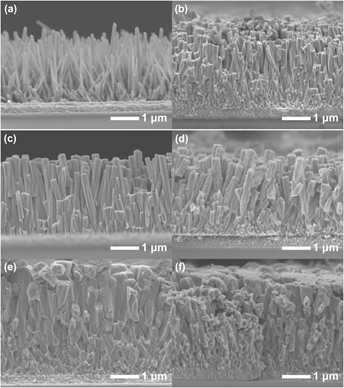Crossref Citations
This article has been cited by the following publications. This list is generated based on data provided by
Crossref.
Liu, Xu
Cao, Xiangkun Elvis
Liu, Ya
Li, Xiaobing
Wang, Meng
and
Li, Mingtao
2018.
Branched multiphase TiO2 with enhanced photoelectrochemical water splitting activity.
International Journal of Hydrogen Energy,
Vol. 43,
Issue. 46,
p.
21365.
Saraswat, Sushil Kumar
Rodene, Dylan D.
and
Gupta, Ram B.
2018.
Recent advancements in semiconductor materials for photoelectrochemical water splitting for hydrogen production using visible light.
Renewable and Sustainable Energy Reviews,
Vol. 89,
Issue. ,
p.
228.
Hu, Jiayuan
Li, Yuhang
Zhang, Shengsen
Zhang, Qiao
Liu, Yunpeng
Zuo, Jianliang
Li, Qiong
and
Peng, Feng
2019.
MoS2 supported on hydrogenated TiO2 heterostructure film as photocathode for photoelectrochemical hydrogen production.
International Journal of Hydrogen Energy,
Vol. 44,
Issue. 59,
p.
31008.
Yu, Chengtao
Zhang, Jingyi
Yang, Hexu
Zhang, Ling
and
Gao, Yu
2019.
Enhanced photovoltaic conversion efficiency of a dye-sensitized solar cell based on TiO2 nanoparticle/nanorod array composites.
Journal of Materials Research,
Vol. 34,
Issue. 07,
p.
1155.
Jin, Jingpeng
Chen, Shengtao
Wang, Jinming
Chen, Chi
and
Peng, Tianyou
2020.
One-pot hydrothermal preparation of PbO-decorated brookite/anatase TiO2 composites with remarkably enhanced CO2 photoreduction activity.
Applied Catalysis B: Environmental,
Vol. 263,
Issue. ,
p.
118353.
Batool, Maria
Gill, Rohama
Munawar, Khadija
McKee, Vickie
and
Mazhar, Muhammad
2022.
Single source precursor derived ZnO–PbO composite thin films for enhanced photocatalytic activity.
Journal of Solid State Chemistry,
Vol. 305,
Issue. ,
p.
122642.
Kelaidis, Nikolaos
Zervos, Matthew
Lathiotakis, Nektarios N.
Chroneos, Alexander
Tanasă, Eugenia
and
Vasile, Eugeniu
2022.
Vapor–liquid–solid growth and properties of one dimensional PbO and PbO/SnO2 nanowires.
Materials Advances,
Vol. 3,
Issue. 3,
p.
1695.
Akay, Defne
Gökmen, Uğur
and
Ocak, Sema Bilge
2022.
Structural role of double layer amphoteric oxides forms on electrical conductivity: PbO/zinc oxide semiconductor.
Physica Scripta,
Vol. 97,
Issue. 9,
p.
095803.
Traiwatcharanon, Pranlekha
Siriwatcharapiboon, Wilai
Jongprateep, Oratai
and
Wongchoosuk, Chatchawal
2022.
Electrochemical paraquat sensor based on lead oxide nanoparticles.
RSC Advances,
Vol. 12,
Issue. 25,
p.
16079.
Akay, Defne
Seven, Elanur
Gökmen, Uğur
and
Bi̇lge Ocak, Sema
2023.
Semiconducting Double-Layer Lead Monoxide Tin Oxide Nanostructures for Photodetectors.
ACS Applied Nano Materials,
Vol. 6,
Issue. 19,
p.
17482.
Fegade, Umesh
Alshahrani, Thamraa
Wu, Ren‐Jang
Lin, Fan‐Hsuan
Chang, Xu‐Jia
Yuan, Shuo‐Huang
Al‐Ahmed, Amir
Khan, Firoz
Haq, Bashirul
and
Afzaal, Mohammad
2024.
High‐Selectivity Hydrogen Gas Sensors based on Mesoporous PbOx‐ZnO Nanocomposites.
Chemistry – An Asian Journal,
Vol. 19,
Issue. 16,
